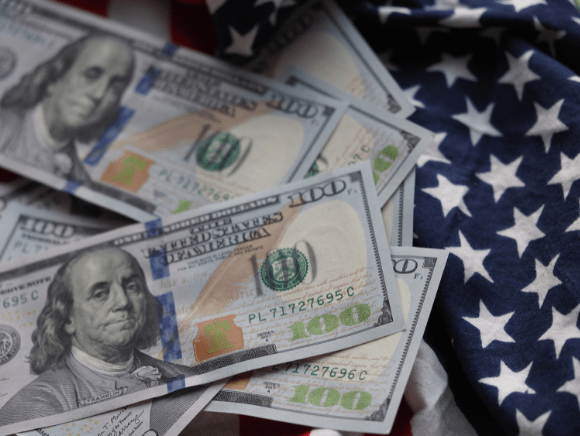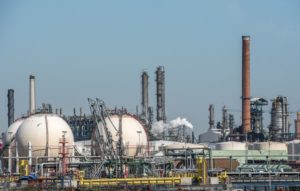The consumer price index (CPI) is at a 13-year high. The personal consumption expenditures (PCE) price index hit a 30-year high. The producer price index (PPI) soared to an 11-year high. Suffice it to say, price inflation is a significant issue in the post-pandemic economy, leaving many low- and middle-income households struggling to keep their heads above water. They are being beaten and battered on all fronts: diluted purchasing power, higher prices, and an anemic economy. But the White House thinks otherwise, blasting the classic Lesley Gore tune, “Sunshine, Lollipops And Rainbows.”
You Have to Spend Money to Stop Inflation
Speaking in an interview with CNBC from Rome, where she attended the G20 summit, Treasury Secretary Janet Yellen thinks the solution to inflation is to spend money the U.S. government does not have. The former head of the U.S. central bank purported that President Joe Biden’s Build Back Better crusade will boost supply, grow the economy, and trim inflation:
“It will boost the economy’s potential to grow, the economy’s supply potential, which tends to push inflation down, not up. For many American families experiencing inflation, seeing the prices of gas and other things that they buy rise, what this package will do is lower some of the most important costs, what they pay for health care, for child care. It’s anti-inflationary in that sense as well.”
 Yellen also insisted that inflation is still transitory, “even if it doesn’t mean a month or two, it means a little bit longer than that.” Ultimately, according to the secretary of the Treasury, pricing pressures will ease once the U.S. recovers from the COVID-19 public health crisis and vaccinations support global economic activity.
Yellen also insisted that inflation is still transitory, “even if it doesn’t mean a month or two, it means a little bit longer than that.” Ultimately, according to the secretary of the Treasury, pricing pressures will ease once the U.S. recovers from the COVID-19 public health crisis and vaccinations support global economic activity.
While the global supply chain crisis is contributing to a surging CPI, the excessive money-printing has exacerbated America’s inflationary crisis. Will the BBB agenda reduce costs for households, like child care? Sure, but it will need to be financed through fiscal and monetary expansion, so families will feel the pinch somewhere else in their lives, especially in the form of a devalued dollar.
Once again, the U.S. is going through a real-time experiment in Keynesian economics. The results are not turning out well.
Afghanistan’s Food Crisis
Afghanistan is not only on the cusp of an economic collapse, but the Middle Eastern nation is also on the brink of a humanitarian crisis, elevated by growing food insecurity among 85% of the population this winter, according to a new study by The Integrated Food Security Phase Classification. The report discovered that 21% of the population would experience a food emergency, 34% will endure a food crisis, and 30% will suffer food stress. This is the highest percentage ever recorded in the country’s history. Kabul will join Ethiopia, South Sudan, Madagascar, and Yemen, facing extreme food deprivation heading into winter.
Oil to $100 – and Beyond?
In 2020, when crude oil futures crashed below zero for the first time in history, there was too much Texas Tea and not enough places to store the barrels. In 2021, it has been reversed: storage facilities are bare as there is not enough black gold. Over the last 12 months, what the heck has happened in the global energy markets? It is an elementary case of supply failing to match demand, my dear Watson. And this could significantly drive up crude prices, particularly if it is a colder-than-normal winter season.
According to the U.S. Energy Information Administration (EIA), crude inventories at the Cushing, OK storage facility declined 3.899 million barrels in the week ending Oct. 2. This represented the third straight weekly decrease. With a little more than 27 million barrels of oil sitting at Cushing, this is the lowest level of inventories since Oct. 2018, buoyed by domestic oil demand climbing to a record high for the month of September.
Market strategists are anticipating substantial price gains in the final quarter of 2021 and heading into 2022. For example, Ole Hansen, Head of Commodity Strategy at Saxo Bank, wrote in a recent research note on Twitter:
“At this rate of decline Cushing could hit its operational floor within a few weeks. A stunning reversal from last year when the pandemic prompted a glut of crude oil so big that exhausted storage capacity briefly forced WTI [West Texas Intermediate] below zero. Watch those WTI front end spreads.”
Earlier this year, Liberty Nation had speculated that crude futures could return to the promised land of $100. Fast forward to the home stretch of 2021, and it appears that $100 is the floor. In other words, oil could be heading to the moon, further fueling rampant inflation throughout the international economy. Will there ever be any respite in sight for businesses, consumers, and motorists? The simple answer might be this: No.
~ Read more from Andrew Moran.





